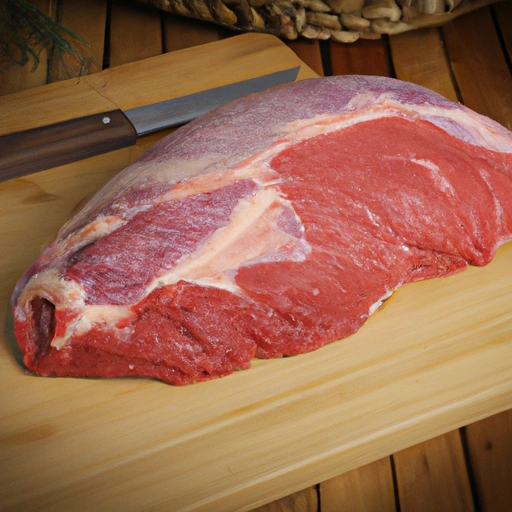Brisket
Description

Brisket is a cut of meat from the breast or lower chest of beef or veal. The beef brisket is one of the nine beef primal cuts, though the precise definition of the cut differs internationally. The brisket muscles include the superficial and deep pectorals, which support much of the animal’s weight; therefore, they contain a significant amount of connective tissue. This cut is known for its rich, dense flavor, which is enhanced through various cooking methods such as smoking, braising, and slow-cooking.
Common uses
Brisket is most commonly used in slow-cooked dishes that allow its tough fibers to break down over time, resulting in tender, flavorful meat. It's popular in barbecue, a staple in Texas-style BBQ, and is often prepared as corned beef or pastrami in Jewish cuisine. In other cuisines, it's slow-roasted, braised, or used to make stews and pot roasts.
Nutritional value
Calories
Typically, a 3-ounce (85 grams) serving of cooked brisket contains approximately 250-300 calories.
Protein
Brisket is rich in protein, offering about 22-28 grams per 3-ounce (85 grams) serving.
Fat
The fat content can vary depending on how the brisket is trimmed, but it generally contains 14-20 grams of fat per 3-ounce (85 grams) serving.
Carbohydrates
Brisket is a carbohydrate-free food unless it is marinated or cooked with sauces that contain sugars and other carbohydrates.
Vitamins
Brisket contains B vitamins, particularly niacin, vitamin B6, and vitamin B12, which are important for energy metabolism and red blood cell formation.
Minerals
It's also a source of minerals such as zinc, selenium, phosphorus, and iron, which support various bodily functions including immune response and oxygen transport.
Health benefits
Being high in protein and essential nutrients, brisket can be part of a balanced diet. It aids in muscle maintenance and repair, supports metabolic processes with its B vitamins, and provides minerals that play vital roles in overall health.
Potential risks
Brisket is high in saturated fats which, when consumed in excess, can lead to cardiovascular diseases. It's also often prepared with salt-rich rubs or marinades which can increase sodium intake. Therefore, it should be consumed in moderation, especially by those with heart health concerns.
Common recipes
Brisket is commonly used in recipes such as smoked brisket, corned beef, pastrami, pot roast, and beef stews.
Cooking methods
Popular cooking methods include smoking, braising, slow-roasting, and stewing. Brisket benefits from long, low-temperature cooking to tenderize the tough meat.
Pairing with other ingredients
This cut pairs well with bold flavors like barbecue sauce, as well as with root vegetables and grains that absorb its juices, such as potatoes, carrots, and barley.
Summary
Brisket is a flavorful and versatile cut of beef that has been enjoyed for centuries around the world. It requires proper cooking techniques to unlock its full potential of tenderness and taste. Whether it's the centerpiece of a holiday meal or the star of a barbecue, brisket's rich taste and nutritious profile make it a beloved ingredient in countless recipes.